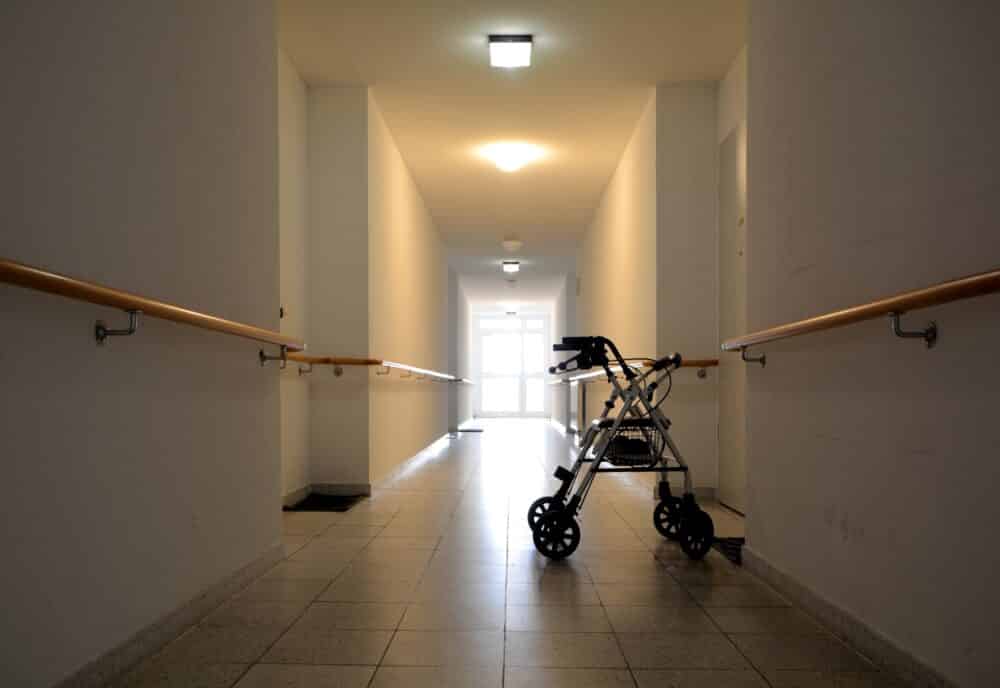In this week’s blog, we discuss the role of private equity investment in nursing homes and what states are doing to address these issues.
Nursing homes owned by private equity firms have higher mortality rates, according to the National Bureau of Economic Research (NBER). Over the past 18 years, private equity (PE) investment in nursing homes increased 20-fold, from $5 billion to $100 billion.
“Private equity’s business model involves buying companies, saddling them with mountains of debt, and then squeezing them like oranges for every dollar,” so says United States Representative Bill Pascrell from New Jersey, of PE companies purchasing nursing homes and elder care facilities. This model naturally lends itself to cutting costs whenever and wherever possible.
Research conducted by the University of Pennsylvania, NYU, and the University of Chicago found that patients were 10% more likely to die within 90 days after leaving a PE-owned skilled nursing facility following a rehabilitation stay as opposed to those leaving a facility owned by non-PE.
The researchers offered possible explanations under private equity ownership of nursing homes: Reduced staffing, increased use of antipsychotic drugs, and complicated business structures that result in funds being used for non-patient care such as monitoring services, rent/lease payments, and interest/debt payments.
Regarding antipsychotic drugs, a recent New York Times article from September 2021 found that nursing homes may be diagnosing residents with mental health conditions that the resident did not previously suffer. The article suggests the reasoning behind this is so facilities with poor staffing can use “powerful drugs to subdue patients and avoid having to hire extra staff.”
The Centers for Medicare and Medicaid Services (CMS) include rates of antipsychotic drug use when ranking nursing homes, as public disclosure is required. However, treatment with antipsychotic drugs for a few enumerated conditions need not be publicly disclosed; this includes schizophrenia. The Times article includes data that nursing home residents are diagnosed with schizophrenia at unusually high rates and unusually late in life. The suggested conclusion is that nursing home medical directors are diagnosing schizophrenia so the nursing home can administer antipsychotic drugs as chemical restraints without publicly disclosing the use, negatively affecting the nursing home’s CMS ratings.
Beyond the issues above, residents of PE-owned reported increased pain, and the facilities themselves are generally billing Medicare at higher rates. This leads to the supposition (although possibly untrue) that these billings are padded to further increase profitability.
The researchers conclude that “These results, along with the decline in nurse availability, suggest a systemic shift in operating costs away from patient care.”
Countering this assessment, the American Investment Council responded to the NBER’s report saying that “[PE investment] firms have been the only viable solution to prevent [nursing homes] from permanently closing their doors,” and that “…recent peer-reviewed academic research shows that PE-backed companies are delivering high-quality care to nursing home residents…”
Massachusetts, New York, and New Jersey are taking steps to direct more long-term care dollars toward care and caregivers and away from executive salaries, advertising, and administrative expenses. These states have introduced mandates dictating what percentage of Medicaid, Medicare, and, in some cases, private insurance dollars must be spent on direct patient care and caregiver wages.
While this may seem like a reasonable solution, Andrew Aronson, the president and CEO of the Health Care Association of New Jersey, explains that “by trying to force providers to put more money into direct care, you’re creating a disincentive for people to invest in their buildings, which is going to drive quality down.”
Direct care advocates do not necessarily share this viewpoint. According to Charlene Harrington, a University of California and San Francisco School of Nursing professor, “If [nursing homes] are not able to pull so much money away from care and spend it on staffing and actual services, it should make a big difference.”
We know there are multiple sides to every argument, as shown above. However, regardless of who is right or wrong, the studies provide a sobering assessment of long-term care. An assessment that we, as elder care advocates, face each day as we struggle to get the best care for the families we represent.
Whether for yourself or a loved one, seeking experienced care advocacy and support can help you navigate the minefield of an opaque and complicated journey.
You can read more about the NEBR research and the American Investment Council’s response, and the nursing home spending mandates at the links below:
Investor-Owned Nursing Homes Draw Scrutiny as Deals Flourish | Bloomberg Law
Does Private Equity Investment in Healthcare Benefit Patients? Evidence from Nursing Homes | NBER
3 States Limit Nursing Home Profits in Bid to Improve Care | KHN


